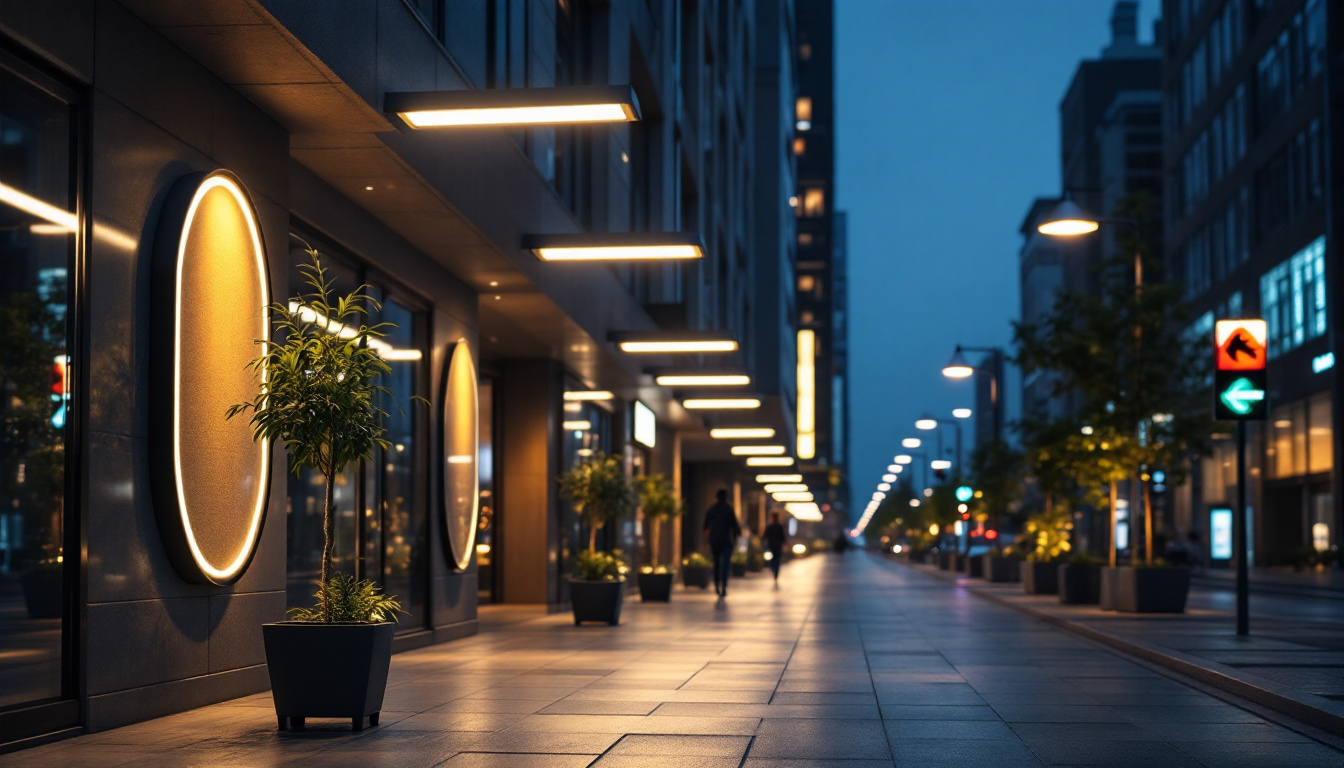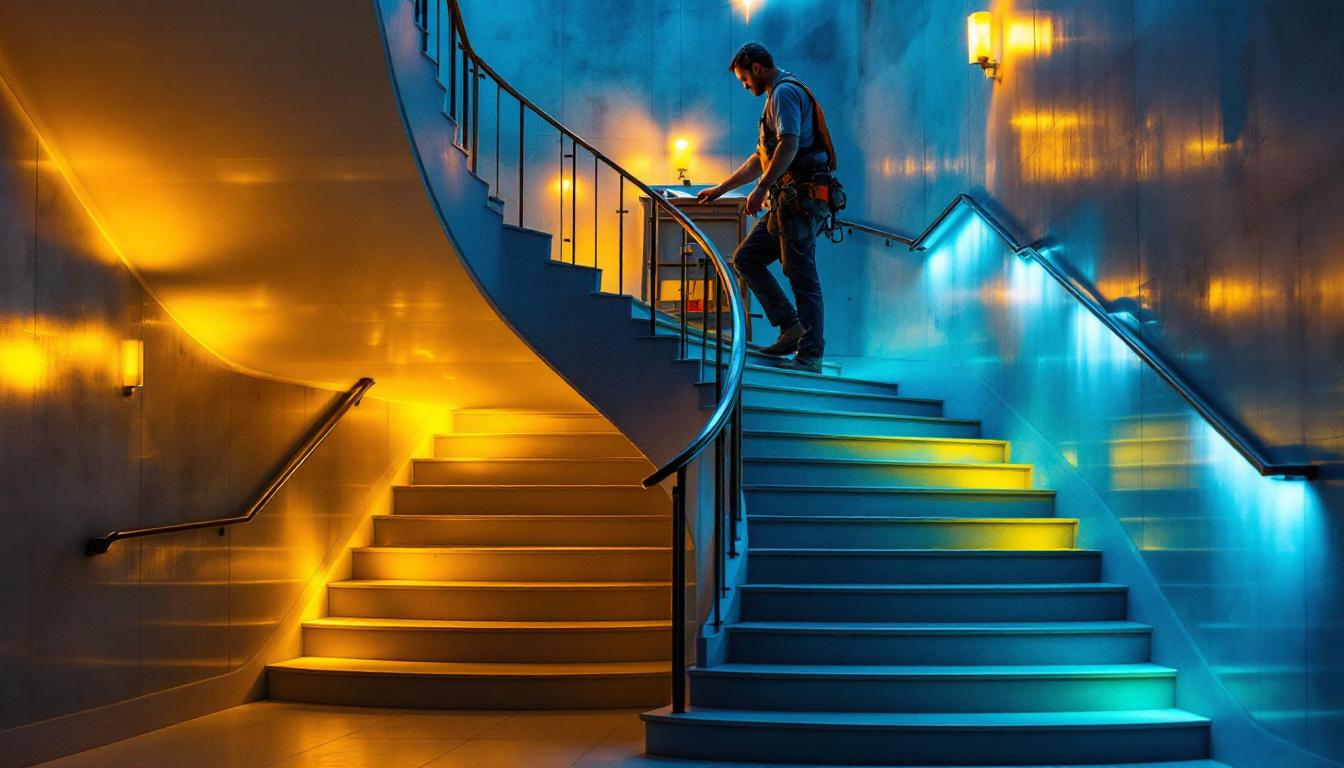
Lighting projects are an integral part of enhancing visibility and aesthetics in both commercial and residential spaces. As technology continues to evolve, the need for future-proofing lighting installations becomes increasingly important. This article delves into the various aspects of sign lights and how to ensure that lighting projects remain relevant and efficient in the years to come.
Sign lights serve a critical function in illuminating signage, making it visible and appealing to passersby. They are often used in various settings, from retail establishments to corporate offices, and play a vital role in branding and communication. Understanding the different types of sign lights available is essential for any lighting contractor looking to implement effective solutions. The right sign light can transform a simple sign into a striking visual statement, drawing attention and enhancing the overall customer experience.
Sign lights come in various forms, each designed to meet specific needs. The most common types include LED flood lights, neon lights, and backlit signs. LED flood lights are energy-efficient and offer a long lifespan, making them a popular choice for outdoor signage. Neon lights, on the other hand, provide a vibrant and eye-catching glow, often used for artistic or decorative purposes. Backlit signs create a halo effect that enhances visibility and adds depth to the signage. Additionally, channel letter signs, which are three-dimensional letters illuminated from within, have gained popularity for their modern aesthetic and versatility in design.
Choosing the right type of sign light depends on several factors, including the location of the sign, the desired aesthetic, and the budget. A thorough understanding of these options allows contractors to make informed decisions that align with their clients’ needs. For instance, while neon lights may be perfect for a trendy café, LED flood lights might be more suitable for a corporate office that values efficiency and professionalism. Furthermore, the installation process and maintenance requirements can vary significantly between different types of sign lights, making it essential for contractors to consider these aspects when advising clients.
Energy efficiency is a crucial consideration in any lighting project. With rising energy costs and increasing environmental concerns, clients are often looking for sustainable solutions. LED technology has revolutionized the lighting industry by providing high-quality illumination while consuming significantly less energy compared to traditional lighting options. Moreover, LED lights have a much longer lifespan, which means less frequent replacements and reduced waste, aligning with eco-friendly practices.
Incorporating energy-efficient sign lights not only reduces operational costs but also enhances the overall appeal of the project. Clients are more likely to appreciate installations that align with their sustainability goals, making energy efficiency a key selling point for contractors. Additionally, many municipalities offer incentives or rebates for businesses that choose energy-efficient lighting solutions, further encouraging the adoption of such technologies. By staying informed about these opportunities, contractors can provide added value to their clients while promoting a greener approach to signage and lighting design.
Future-proofing lighting projects involves anticipating changes in technology, regulations, and client needs. By implementing effective strategies, contractors can ensure that their installations remain relevant and functional for years to come.
Smart technology is reshaping the way lighting systems operate. Integrating smart controls into sign lights allows for remote management, scheduling, and energy monitoring. This capability not only enhances user convenience but also provides valuable data that can inform future upgrades.
For instance, smart lighting systems can adjust brightness levels based on ambient light conditions, ensuring optimal visibility while minimizing energy consumption. By incorporating smart technology into sign light installations, contractors can offer clients a forward-thinking solution that adapts to their evolving needs.
Modular design is another effective strategy for future-proofing lighting projects. By choosing modular components, contractors can easily upgrade or replace parts of the lighting system without the need for a complete overhaul. This flexibility is particularly beneficial in a rapidly changing technological landscape.
For example, if a new lighting technology emerges that offers improved efficiency or enhanced features, a modular system allows for seamless integration. Clients will appreciate the ability to adapt their lighting systems as their needs change, making modular design an attractive option for contractors.
Staying informed about local regulations and industry standards is essential for any lighting contractor. Compliance ensures that installations meet safety and performance criteria, reducing the risk of costly rework or penalties. Additionally, many jurisdictions are increasingly adopting stricter energy efficiency standards, making it imperative to choose lighting solutions that align with these requirements.
By proactively addressing compliance issues, contractors can position themselves as knowledgeable and reliable partners in the lighting industry. This not only enhances their reputation but also fosters long-term relationships with clients who value adherence to regulations.
Effective design is a cornerstone of successful lighting projects. When it comes to sign lights, several design considerations can enhance both functionality and aesthetics.
The placement and orientation of sign lights significantly impact their effectiveness. Proper positioning ensures that signage is adequately illuminated while minimizing glare and light pollution. Contractors should consider factors such as the viewing angle, surrounding structures, and potential obstructions when determining the optimal placement of sign lights.
Additionally, the orientation of the lights should be adjusted to direct illumination precisely where it is needed. This attention to detail not only enhances visibility but also contributes to the overall aesthetic appeal of the installation.
The color temperature of sign lights plays a vital role in conveying the intended message and creating the desired atmosphere. Warmer color temperatures (around 2700K to 3000K) are often associated with a welcoming ambiance, while cooler temperatures (above 4000K) can create a more modern and energetic feel.
Moreover, the quality of light is crucial for ensuring that signage is easily readable. High Color Rendering Index (CRI) values indicate that the lighting will accurately represent colors, which is particularly important for branding purposes. Contractors should select sign lights that provide the appropriate color temperature and quality of light to enhance the overall effectiveness of the signage.
Maintenance is a critical aspect of ensuring the longevity of sign lights. regular upkeep not only extends the lifespan of the lighting system but also maintains its performance and appearance over time.
Implementing a schedule for routine inspections can help identify potential issues before they escalate. This proactive approach allows contractors to address maintenance needs promptly, ensuring that sign lights remain in optimal condition. Inspections should include checking for signs of wear, verifying electrical connections, and cleaning fixtures to remove dirt and debris.
By prioritizing routine inspections, contractors can enhance the reliability of their installations and build trust with clients who appreciate the value of well-maintained lighting systems.
Even with regular maintenance, certain components may eventually require replacement or upgrades. Contractors should educate clients about the expected lifespan of various lighting components and the signs that indicate when replacements are necessary. This transparency fosters a sense of partnership and ensures that clients are prepared for future maintenance needs.
Additionally, staying informed about advancements in lighting technology allows contractors to recommend upgrades that can enhance performance and efficiency. By offering clients the option to upgrade their sign lights, contractors can demonstrate their commitment to providing long-lasting solutions.
Educating clients about the benefits of future-proofing their lighting projects is essential for fostering strong relationships. Engaging clients in the decision-making process not only empowers them but also ensures that their specific needs and preferences are considered.
Hosting workshops or demonstrations can be an effective way to showcase the advantages of modern lighting solutions. These events provide an opportunity for clients to learn about the latest technologies, energy efficiency strategies, and design considerations. By actively involving clients in the learning process, contractors can build trust and credibility.
Moreover, hands-on demonstrations allow clients to see the impact of different lighting options firsthand, helping them make informed decisions about their sign light installations.
Every client has unique needs and preferences, making customized solutions essential for successful lighting projects. Contractors should take the time to understand their clients’ goals, budget constraints, and aesthetic preferences. This personalized approach not only enhances client satisfaction but also positions contractors as trusted advisors in the lighting industry.
By offering tailored solutions, contractors can demonstrate their expertise and commitment to delivering high-quality results that meet the specific requirements of each project.
Future-proofing lighting projects, particularly sign lights, is essential for ensuring long-term success in the ever-evolving lighting industry. By understanding the various types of sign lights, embracing smart technology, and implementing modular design strategies, contractors can create installations that remain relevant and efficient.
Moreover, paying attention to design considerations, maintenance, and client engagement enhances the overall quality of lighting projects. By prioritizing energy efficiency and compliance with regulations, contractors can position themselves as leaders in the field, providing clients with sustainable and innovative solutions.
As the lighting landscape continues to evolve, staying informed and adaptable will be key to thriving in this dynamic industry. By focusing on future-proofing strategies, contractors can ensure that their lighting projects not only meet current needs but also stand the test of time.
Ready to elevate your lighting projects to the next level? At LumenWholesale, we provide contractors with the highest quality, spec-grade lighting products at prices that can’t be beaten. Say goodbye to local distributor markups and hello to our extensive selection that meets rigorous industry standards. With free shipping on bulk orders, you can secure premium lighting solutions at the best value, ensuring your projects are future-proofed with efficiency, sustainability, and style. Don’t settle for less—choose LumenWholesale for quality, affordability, and convenience. Explore our collection now and take advantage of Wholesale Lighting at the Best Value.

Discover how LED sign illumination can boost your business’s profitability.

Discover how concrete posts can revolutionize your outdoor lighting setup with energy-efficient solutions.

Discover how Keystone LED tubes can help lighting contractors win more bids with energy savings, durability, and cost efficiency.

Discover how stair lighting indoors is transforming spaces and offering a competitive edge for lighting contractors.